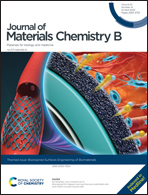Recent progress in tannic acid-driven antibacterial/antifouling surface coating strategies
Abstract
Medical devices and surgical implants are necessary for tissue engineering and regenerative medicines. However, the biofouling and microbial colonization on the implant surface continues to be a major concern, which is difficult to eradicate and typically necessitates either antibiotic therapy or implant removal. As a result, efficient and eco-friendly bioinspired coating strategies for tethering functional materials or molecules on different medical substrates are highly desirable, especially for endowing versatile surface functionalities. Tannic acid (TA), a well-known tea stain polyphenol, has a good affinity for various substrates and actively inhibits the adhesion and colonization of microbes. Thus, functionalization of polymers, nanomaterials, metal-phenolic networks (MPNs), and proteins using TA bestows the end-products with unique binding or anchoring abilities on various implantable surfaces. This review addresses the recent advancements in the essential biomedical perspective of TA-based bioinspired universal surface coating technologies by focusing on their intrinsic features and ability to produce engineered functional composites. Further, the possible contributions of TA-based composites in antifouling and antibacterial applications on various biomedical substrates are outlined.

- This article is part of the themed collections: 2022 Journal of Materials Chemistry B Most Popular Articles, 2023 Journal of Materials Chemistry B Lunar New Year and Bioinspired Surfaces Engineering for Biomaterials


 Please wait while we load your content...
Please wait while we load your content...